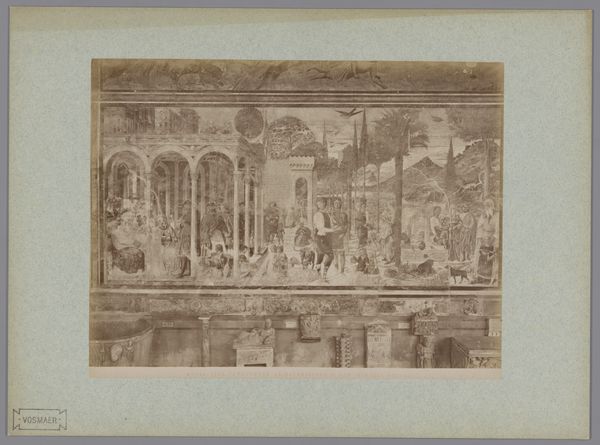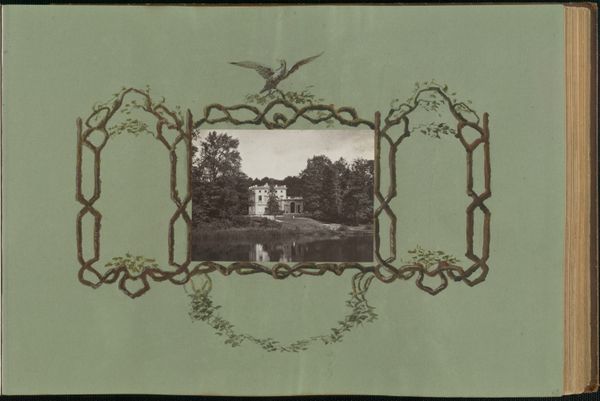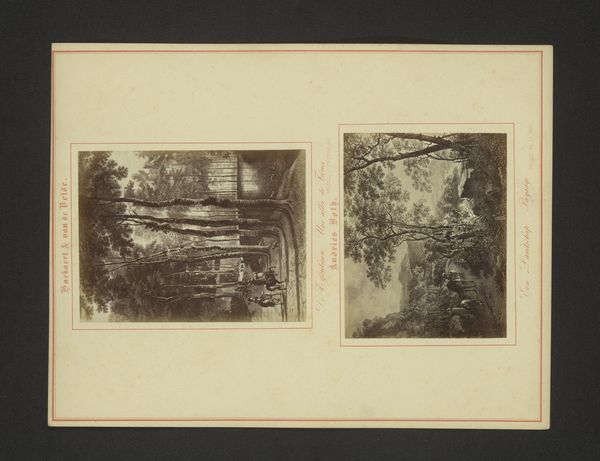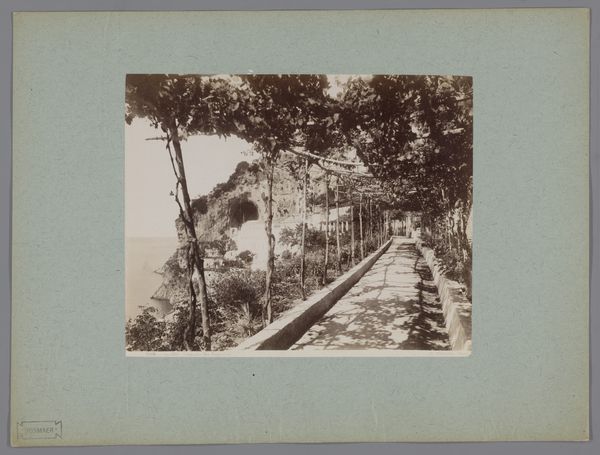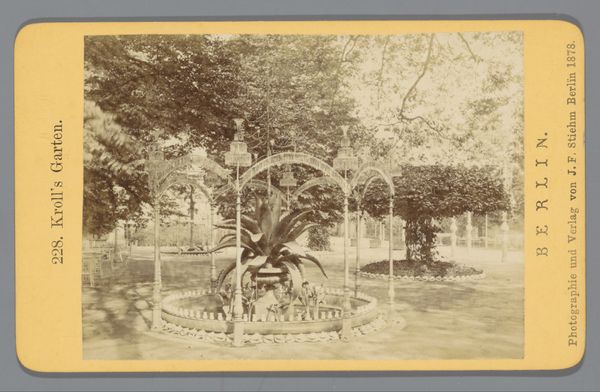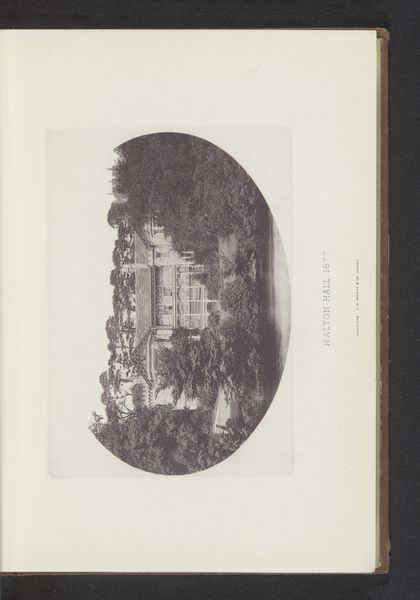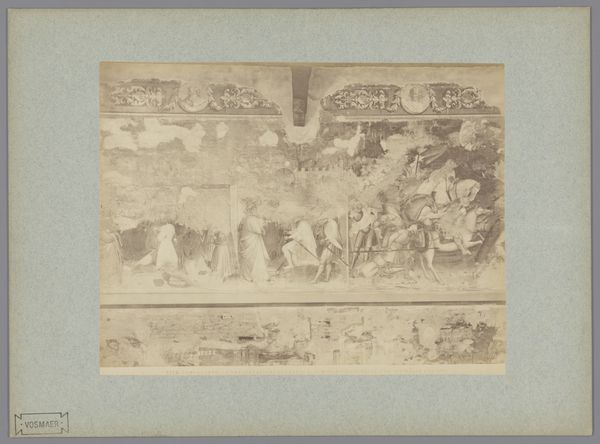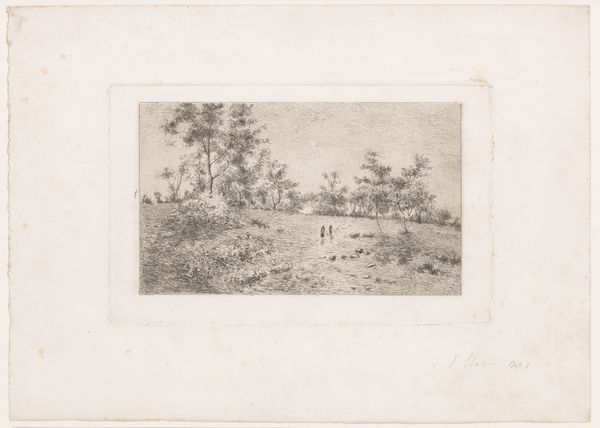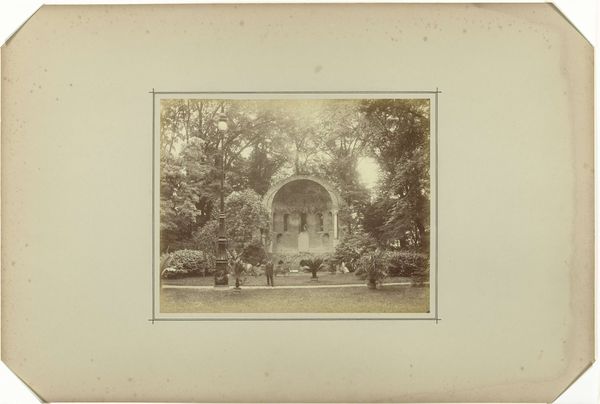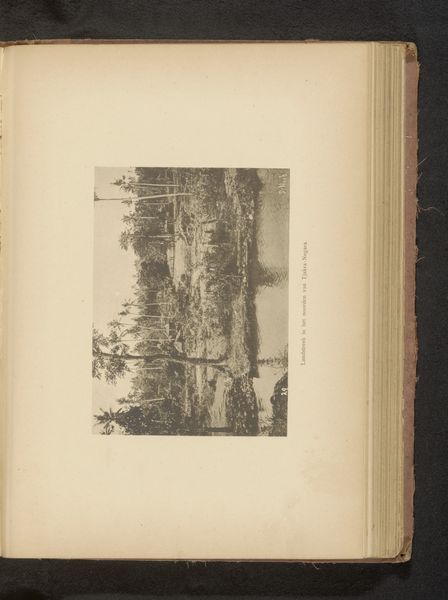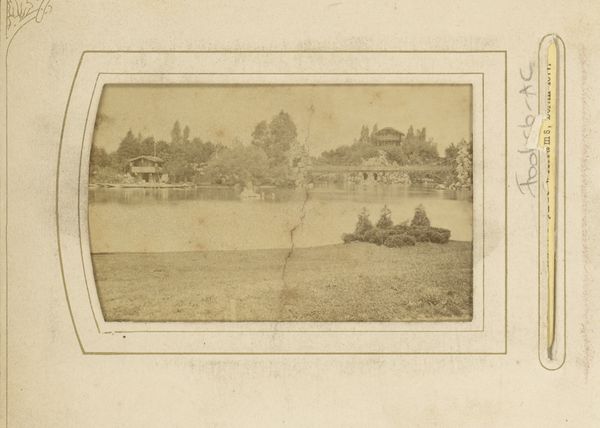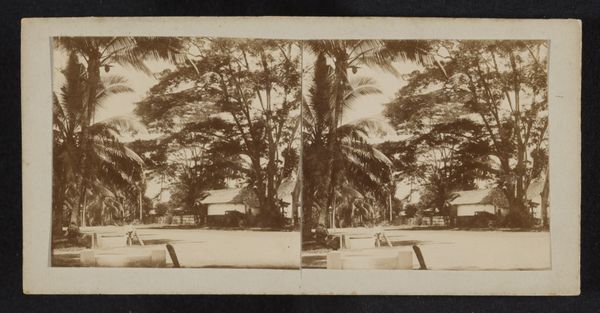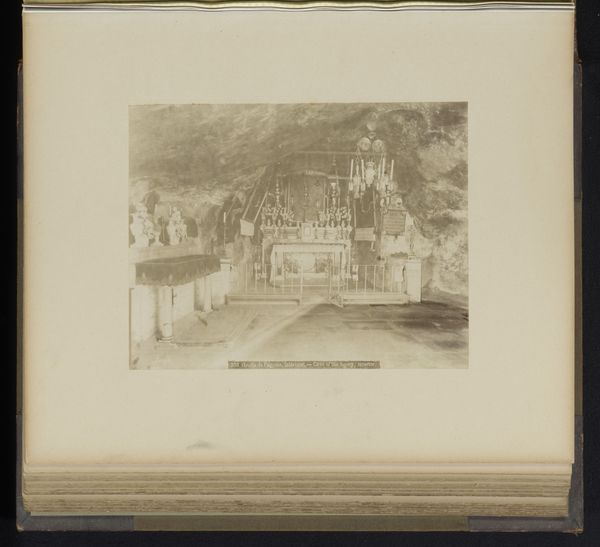
Fotoreproductie van het fresco De scepter van Aäron en de bronzen slang naar Benozzo Gozzoli in het Camposanto te Pisa, Italië 1857 - 1900
0:00
0:00
print, fresco, photography, gelatin-silver-print
#
aged paper
# print
#
landscape
#
fresco
#
photography
#
gelatin-silver-print
#
academic-art
#
italian-renaissance
Dimensions: height 189 mm, width 241 mm, height 261 mm, width 353 mm
Copyright: Rijks Museum: Open Domain
This photograph by Fratelli Alinari captures Benozzo Gozzoli’s fresco, "The Scepter of Aaron and the Bronze Serpent," originally located in the Camposanto in Pisa, Italy. Think of the Camposanto not just as a cemetery, but as a public space adorned with art meant to teach and inspire. Gozzoli's fresco, dating back to the 15th century, visualizes stories from the Old Testament with a clear didactic purpose. Its display in the Camposanto engages with core tenets of the Catholic faith, reinforcing moral codes through biblical narrative. The choice of episodes such as the story of Aaron’s scepter and the bronze serpent emphasize divine authority and the consequences of disobedience. Photographs like this one, taken in the late 19th century, served to disseminate and preserve the artwork. This photograph is a testament to evolving methods of documentation, while also raising questions about access, reproduction, and how these impact our understanding of historical art. As historians, we consider how such images transform over time, shaping their reception and significance. Examining archival materials and institutional records is crucial for understanding the complex journey of such works across centuries.
Comments
No comments
Be the first to comment and join the conversation on the ultimate creative platform.
